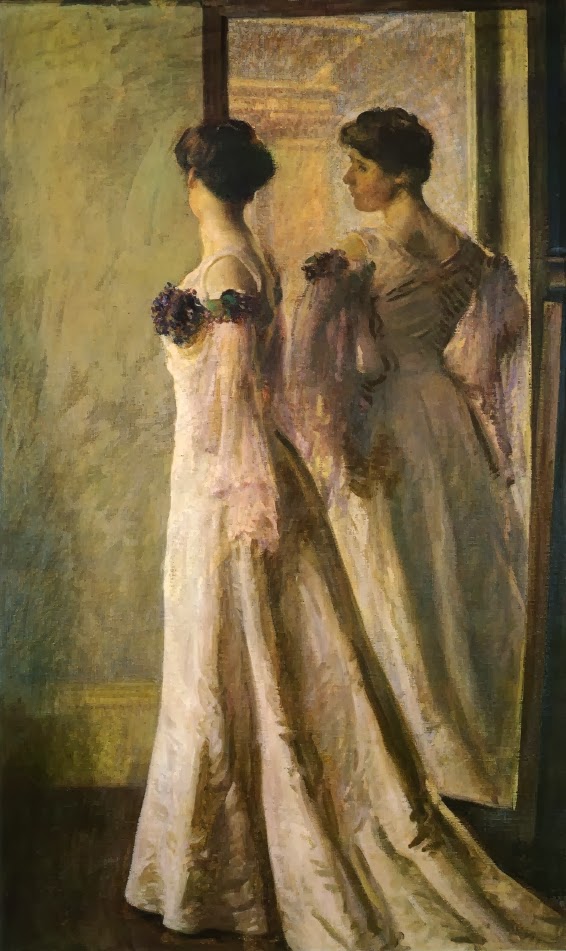The very best portrait artists gravitated to places where wealth and tradition were firmly in place -- Paris, London, New York City and Boston are prime examples. Joseph DeCamp (1858-1923) came from Cincinnati, studied under Frank Duveneck in Munich, but made his career in Boston. A short Wikipedia entry about him is here, and a more detailed biographical note can be found here. Apparently DeCamp painted many landscapes early in his career, but most of these were destroyed in a studio fire.
Besides painting commissioned portraits and teaching -- his main sources of professional income -- DeCamp created many paintings for his own purposes, many having beautiful women as the subject. They were often very good, as can be seen below.
Theodore Roosevelt - 1908
In the Studio - 1890-95
Mrs Ernest Major - 1902-03
The Heliotrope Gown - 1905
The Guitar Player - 1908
The Blue Cup - 1909
The window Blind - 1921
My guess is that this was inspired by Vermeer; note the similar room arrangement.
The Blue Mandarin Coat - 1922








1 comment:
He often avoids painting hands. Not always though.
Post a Comment